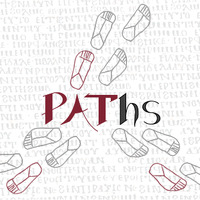Interactive Resource
Archaeological Atlas of Coptic Literature
- Title
- eng Archaeological Atlas of Coptic Literature
- Description
-
eng
An exhaustive digital Archaeological Atlas of Coptic Literature provides a new comprehensive perspective on the spread and development of Coptic literature and manuscript culture. This versatile tool allows detailed and focused research and correlation of chronological, regional and thematic data. It also illustrates the relationship between settlements uncovered by the archaeological and topographical investigations and intellectual activity revealed in manuscripts.
The Archaeological Atlas of Coptic Literature is based on a central web database will be continuously updated in the future. The database is composed of seven fundamental parts (entities), dedicated to Places, Manuscripts, Works, Authors, Titles, Colophons, and Collections. Each part addresses specific issues and follows its own methodological guidelines and descriptive protocols which are closely linked to each other in a network pattern that draws it strength from these links. The principal aim is to provide the literary and manuscript tradition with a sound archaeological and geographical context and vice-versa.
The Atlas gives full access to the main database and provides different types of search experience, from the easiest (and easy to perform) to the most refined and granular.
To help and guide users towards interesting research results some default search filters are prepared and made available, ready to be run and visualised. These “Saved queries” are available for single parts and for geographic data visualisation. The welcome page of the Atlas shows by default all Places that are related to Coptic Literary Manuscripts, and by disabling the filter in the left bar all recorded Places are shown. Amongst other products, PAThs presently includes:
- A complete classification of the Coptic manuscript tradition, by means of the attribution of stable identifiers for each manuscript (codicological unit), in order to have univocal coordinates of reference for the entirety of Coptic literary production. Such a classification can be progressively expanded as new manuscripts are discovered.
- A detailed codicological description of part of the codicological units (to be expanded progressively).
- A complete classification of Coptic literature, by means of the attribution of a Clavis Coptica (CC) entry for each work and each title, and of a stable identifier for each colophon.
- A complete census of the relevant places, including sites where individual manuscripts (for instance codices buried with a body, as a funerary kit) or entire ‘collections’ (for example a monastery library) have been found; major Late Antique and Medieval archaeological sites, as known from published reports; other places of political, religious, and cultural significance (like episcopal sees), even when they have left no specific physical trace or evidence.
- A census, edition, and translation of Coptic titles.
- A census, edition, and translation of Coptic colophons.
- A classification of book formats, writing supports and other relevant codicological features of the manuscripts, in relation to the texts that they transmit. - Contributor(s)
-
Paola Buzi
Value Annotations
- Description
- eng Principal Investigator
- Julian Bogdani
- Paolo Rosati
- Eliana Dal Sasso
- Francesco Berno
- Ilaria Rossetti
- Agostino Soldati
- Nathan Carlig
- Alexandros Tsakos
- Tea Ghigo
- Marta Addessi
- Annunziata Di Rienzo
- Francesco Valerio
- Angelo Colonna
- Rights
- CC BY-NC-SA 4.0
- Date Issued
- 2022
- Language
- eng
- Temporal Coverage
- en Predynastic Egypt (4500-2950 BCE/BC)
- en Early Dynastic Mesopotamia (2950-2350 BC)
- en Old Kingdom Egypt (2670-2168 BCE/BC)
- en First Intermediate Period Egypt (2168-2010 BCE/BC)
- en Middle Kingdom Egypt (2010-1640 BCE/BC)
- en Second Intermediate Period Egypt (1640-1548)
- en New Kingdom Egypt (1548-1086)
- en Third Intermediate Period Egypt (1086-664)
- en Late Period Egypt (664-332)
- en Macedonian Egypt (332-304 BCE/BC)
- en Ptolemaic Egypt (304-30 BCE/BC)
- en Roman, early Empire (30 BC-AD 300)
- en Late Antique-Late Byzantine (AD 300-1450)
- en Early Ottoman Empire (AD 1453-1683)
- en Late Ottoman Empire (AD 1683-1918)
- Spatial Coverage
- Helearchia
- Apa Thomas, Mon.
- Pindis
- Akanthonos
- Tse
- Theogonis
- Achaia Kome
- To Ennaton
- Stathmoi
- Sathro
- Onouphis
- Aphnaion
- Terenouthis
- Kellia
- Amheida
- Lepidoton Polis
- Phragonis
- Boon
- Manlau
- Heroonpolis
- el-Deir
- Deir Abu Matta
- Panephysis
- Ammon
- Ramesseum
- Ptoou Nkalamon
- Diospolis Kato
- Hadrianopolis
- Esotero Oasi
- Serra
- Antaiopolis
- Deir Abou Makar
- Sebennytos
- Tanis
- Bousiris
- Thambol
- Erythron
- Speos Artemidos
- Coptos
- Boreum
- El-Kharga
- Luxor
- Natho
- Mansuriya
- Deir Abu Fam
- Troia
- Titkois
- Amarna
- Pisais
- Raithenoi
- Kaine
- Deir el-Abiad
- Barke
- Pharbaithos
- Letopolis
- Arsinoe
- Taya
- Dimeh
- Aphrodito
- Kom Medinet Ghuran
- Deir Anba Bidaba
- Pharan
- Tamiathis
- Cairo
- Hibis
- Mendes
- Kellis
- Hephaistos
- Athribis
- Tebtynis
- Antinoopolis
- Krokodilopolis
- Naucratis
- Haueris
- Kabasa
- Schedia
- Antipyrgos
- Tell el-Yahudiya
- Ceramice
- Nitriai
- Bouto
- Kynopolis
- Kynopolis
- Alexandria
- Apollonopolis Magna
- Sile
- Bassachitai
- Abu Sha'ar
- Karanis
- Deir el-Dik
- Andronpolis
- Tentyra
- Metelis
- Pachoras
- Herakleopolis
- Per-Bast
- Tell el-Moqdam
- Hipponon
- Nekhen
- Bau
- Lykopolis
- Phakoussa
- Ptolemais Hormou
- El-Kubaniya
- Paraetonium
- Wadi Sarga
- Hypsele
- Nalot
- Zygris
- Dionysias
- Touphion
- Antiphrai
- Daphnai
- Chenoboskion
- Latopolis
- Naqlun
- el-Aguz
- Magdola
- Deir Abu Hennes
- Koussai
- Pachnamounis
- Bagawat
- Hermopolis Mikra
- Berenice
- Ptolemais
- Apa Apollo, Mon.
- Memphis
- Panopolis
- Berenice
- Arsinoites
- Omboi
- Somolo
- Elephantine
- Deir el-Bakhit
- Herakleopolis Mikra
- Aphrodito
- Deir el-Shuhada
- Heliopolis
- Ostrakine
- Qubba
- Syene
- Ain el-Sabil
- Pelusium
- Beni Hasan
- Qubbet el-Hawa
- Neiloupolis
- Sebennytikon Stoma
- Abydos
- Philoteris
- Arminna West
- Philagris
- Tabennisis
- Clysma
- Apollonopolis Parva
- Talithis
- Talmis
- Xois
- Apa Bane, Monastery
- Deir Mustafa Kashef
- Hermonthis
- S. Simeon, Monastery
- Thmouis
- Kom Namrud
- Diospolis Mikra
- Wadi Tum
- Lykopolites Nomos
- Mareia
- Bakchias
- Ankyronpolis
- Ain el-Gedida
- Skenai Mandrai
- Giza
- Kalamon
- Oxyrhynchites
- Philae
- Hermopolis Magna
- Dongola
- Valley of the Kings
- Theadelpheia
- Arsinoe
- Rhinocolura
- Athribis
- Ain el-Hayz
- Sketis
- Deir Abou Menas
- Thenessos
- Karnak
- Memnonia
- Nikiou
- This
- Prosopites
- Deir Abu Masis
- Narmouthis
- Hermopolis
- Oxyrhynchus/Pemje
- Sais
- Deir el-Medina


